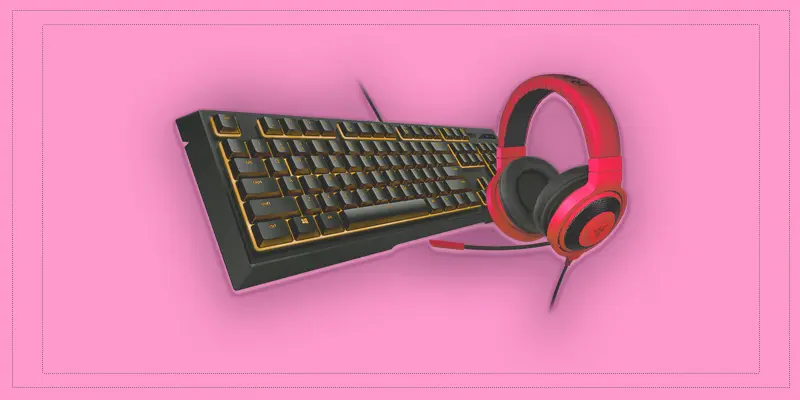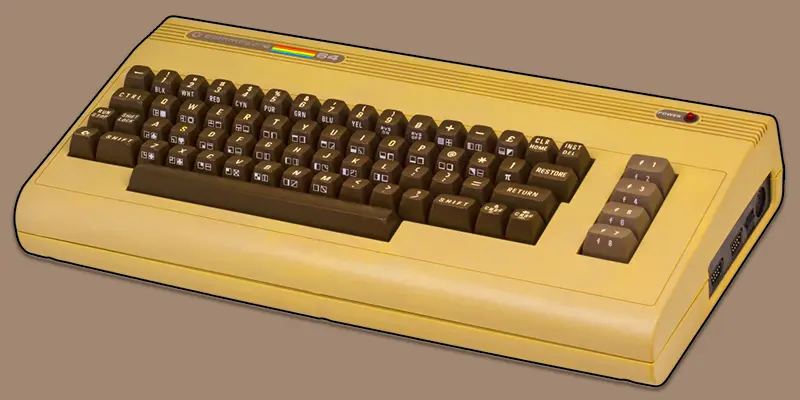Keyboard Uses Explained: More Than Just Typing
Published: 5 Apr 2024
Did you know the average computer user presses over 8,000 keys a day? That’s because the uses of the keyboard go far beyond just typing letters. From writing documents to playing games and using shortcuts, keyboards are a key tool in everyday computer tasks.
Here are some common uses of a keyboard:
- Typing Text
- Entering Commands
- Gaming
- Programming
- Editing Documents
- Navigating the Web
- Creating Shortcuts
- Data Entry
- Email Composition
- Remote Control
- Communication via Chat
- Spreadsheet Manipulation
What Is a Keyboard?
A keyboard is a tool you use to type letters, numbers, and commands on a computer. It helps you talk to your device by pressing buttons called keys. You use a keyboard to type on a computer for a school report, search for something on Google, or send a message on Facebook.
It’s one of the most important parts of any computer setup!
What are the Common Uses of the Keyboard in Daily Life?
Typing Text
Typing on a computer is one of the most fundamental uses of a keyboard, allowing users to input written information quickly and efficiently. Whether for emails, documents, or messages, learn keyboard typing essential for communication and productivity.
Entering Commands
Entering commands through the keyboard allows users to interact with software or the operating system, executing specific functions or tasks efficiently. It is essential for controlling applications, managing files, and navigating the computer.
Gaming with a Keyboard
The keyboard plays a crucial role in gaming, providing precise control for character movements, commands, and shortcuts. It enhances the gaming experience by offering fast response times and customizable inputs.

Programming
The computer keyboard use in daily life is essential in programming, allowing developers to write, edit, and debug code efficiently. It enables quick access to various programming commands, symbols, and shortcuts for smooth coding workflows.
Editing Documents
The computer keyboard‘s purpose is editing documents, allowing users to easily make changes, format text, and navigate through content. It provides quick access to functions like copy, paste, delete, and undo, streamlining the editing process for improved productivity.
Navigating the Web
The keyboard input device is essential for navigating the web, enabling users to easily type web addresses, search queries, and interact with online content. Navigation keys allow for efficient browsing, with shortcuts for scrolling, opening tabs, and accessing links.
Creating Shortcuts
Creating shortcuts on a keyboard allows users to perform tasks quickly by using key combinations. These keyboard keys can speed up processes like opening applications, copying and pasting, and navigating through files, making work more efficient.

Data Entry
Data entry involves using a keyboard to input information into databases, spreadsheets, or software systems. It requires accuracy and speed to ensure the data is correctly recorded and organized for further use.
Email Composition
Email composition involves writing and formatting messages to communicate effectively with others. It includes crafting clear subject lines, and body text, and using features like attachments. Proper email composition ensures professional and efficient communication.
Remote Control
A keyboard can be used as a remote control for devices, allowing users to navigate and control systems like TVs, media players, or even smart home devices. This functionality provides convenience and enhances user experience with seamless control at your fingertips.
Communication via Chat
Keyboards are essential for communication, digital typing via chat, allowing users to type and send messages quickly across various platforms. Whether for personal or professional use, they enable smooth, real-time conversations with friends, family, or colleagues.
Spreadsheet Manipulation
Keyboards play a crucial role in spreadsheet manipulation, allowing users to enter data, navigate cells, and perform various functions with ease. Whether creating complex formulas or organizing data, keyboards make spreadsheet tasks faster and more efficient.

Keyboard vs. Touchscreen: Which One Is Better?
Is a Keyboard Better Than a Touchscreen?
Keyboards are faster and better for typing long text like emails, essays, or reports.
Touchscreens are great for quick taps, swipes, and short messages.
If you’re writing an essay or working on a document, a keyboard makes it much easier and quicker than tapping on a screen.
When to Use a Keyboard or Mouse
- Use a keyboard for typing, using shortcuts, and entering commands.
- Use a mouse for clicking, dragging files, and selecting items.
The best setup? Use both together. You’ll work faster and get more done with less effort.
Conclusion about Keyboard Uses
So guys, in this article, we’ve covered uses of keyboard in detail. Whether you’re a student, gamer, or office user, knowing how to use your keyboard fully can really improve your computer experience. I suggest starting with simple commands like copy, paste, and refresh, they’ll make daily tasks easier.
Try them out and let me know in the comments which one helped you the most!
FAQS About Keyboard Functions And Uses
A keyboard is used to type letters, numbers, and symbols into a computer. It helps you write emails, create documents, and enter commands. You also use it for shortcuts, gaming, and web browsing.
The keyboard lets you type, move the cursor, use shortcuts, control settings, and navigate menus. Each key has a job, like letters for typing and arrows for moving. Special keys like Ctrl and Alt help you do tasks faster.
The most common use is typing text into a computer. People use keyboards to write messages, search online, or work on documents. It’s a main tool for everyday computer tasks.
Keyboards let you control your computer quickly and easily. They help you type, play games, and give commands without a mouse. It’s one of the most important input tools for any computer user.
The seven special keys are: Ctrl, Alt, Shift, Enter, Backspace, Tab, and Esc. These keys don’t type letters but help you do things faster. For example, Ctrl + C copies text.
Most people use mechanical or membrane keyboards for typing. Mechanical keyboards are louder but give better feedback. Membrane ones are quieter and common in offices or homes.
The main purpose is to input information into a computer. It lets you type words, numbers, and use commands. It’s how you “talk” to your computer.
Keyboards are better for long typing tasks like writing or coding. Touchscreens are good for quick taps or mobile use, but not as fast for typing. Many people prefer keyboards for comfort and speed.

- Be Respectful
- Stay Relevant
- Stay Positive
- True Feedback
- Encourage Discussion
- Avoid Spamming
- No Fake News
- Don't Copy-Paste
- No Personal Attacks

- Be Respectful
- Stay Relevant
- Stay Positive
- True Feedback
- Encourage Discussion
- Avoid Spamming
- No Fake News
- Don't Copy-Paste
- No Personal Attacks





